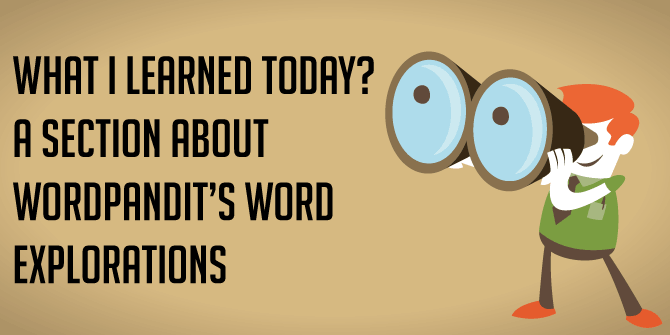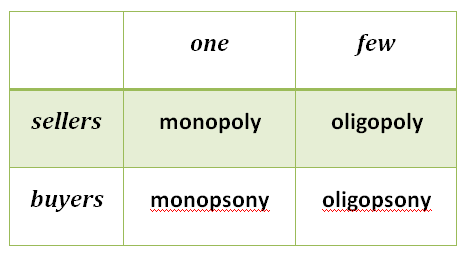 Why this section?
Why this section?
Well, I have not posted in this section for some time but it is never too late to revive a section, is it?
The post for today focuses on 4 types of markets and how they operate. It is a cliché but at the risk of quoting something banal, I would like to point out few economic terms we all have heard at some point of time: markets, demand, supply, buyers and sellers. These are simple terms we all know. This post won’t explain the meanings of these words to you, but rather would go on to explain the different kinds of markets we can have by varying the buyers and sellers in the relationship.
How did I come about writing such a post? Well, I was reading an article based on economics that repeatedly used ‘oligopsony’. This made me explore the word, and bingo, we have this post. The table below explains the relationship between buyers and sellers, and different kinds of markets we derive by varying these numbers.

As we can see from above, an oligopsony (from Ancient Greek oligo meaning “few” and opsōnia meaning “purchase”) is a market form in which the numbers of buyers is small while the numbers of sellers is large. In this case, numerous sellers compete with each to sell their products to a limited number of buyers. In the real world, these buyers in all probability would be large and powerful ones who dictate terms to the seller. How we wish our worlds were oligospsonies; we could have got some cheap stuff, but this just does not happen, does it?
 The market form diametrically opposite to an oligopsony is an oligopoly (from Greek oligo meaning “few” + pole meaning “to sell”). In this market form, the industry is dominated by a small number of sellers (oligopolists). Well, this is definitely not the kind of market we would want around us, isn’t it? The lack of competition can mean higher costs for us.
The market form diametrically opposite to an oligopsony is an oligopoly (from Greek oligo meaning “few” + pole meaning “to sell”). In this market form, the industry is dominated by a small number of sellers (oligopolists). Well, this is definitely not the kind of market we would want around us, isn’t it? The lack of competition can mean higher costs for us.
Well, we have done two cases where we talked of few sellers and few buyers. But what is there is only seller or only one buyer? The former is a monopoly (from Greek monos meaning “alone or single” and pole meaning “to sell”) and in it, only a specific person or enterprise is the supplier of a particular commodity. In contrast, a monopsony is one where there is only a single entity to buy a good or a service, effectively this buyer controls the market.
Both, monopolies and monopsonies, represent states of imperfect economic completion and neither is healthy for us. Where do find examples of such markets? Have a peak into the defense and space industries. These are places where the buyers are generally the governments (single buyers) and the sellers are usually limited as well.
Well, this completes our little exploration into the world of economics and types of markets. Hope you had a pleasant time reading this piece. Drop us the ideas that you would like me to discuss in this section, and I would love to do so.







